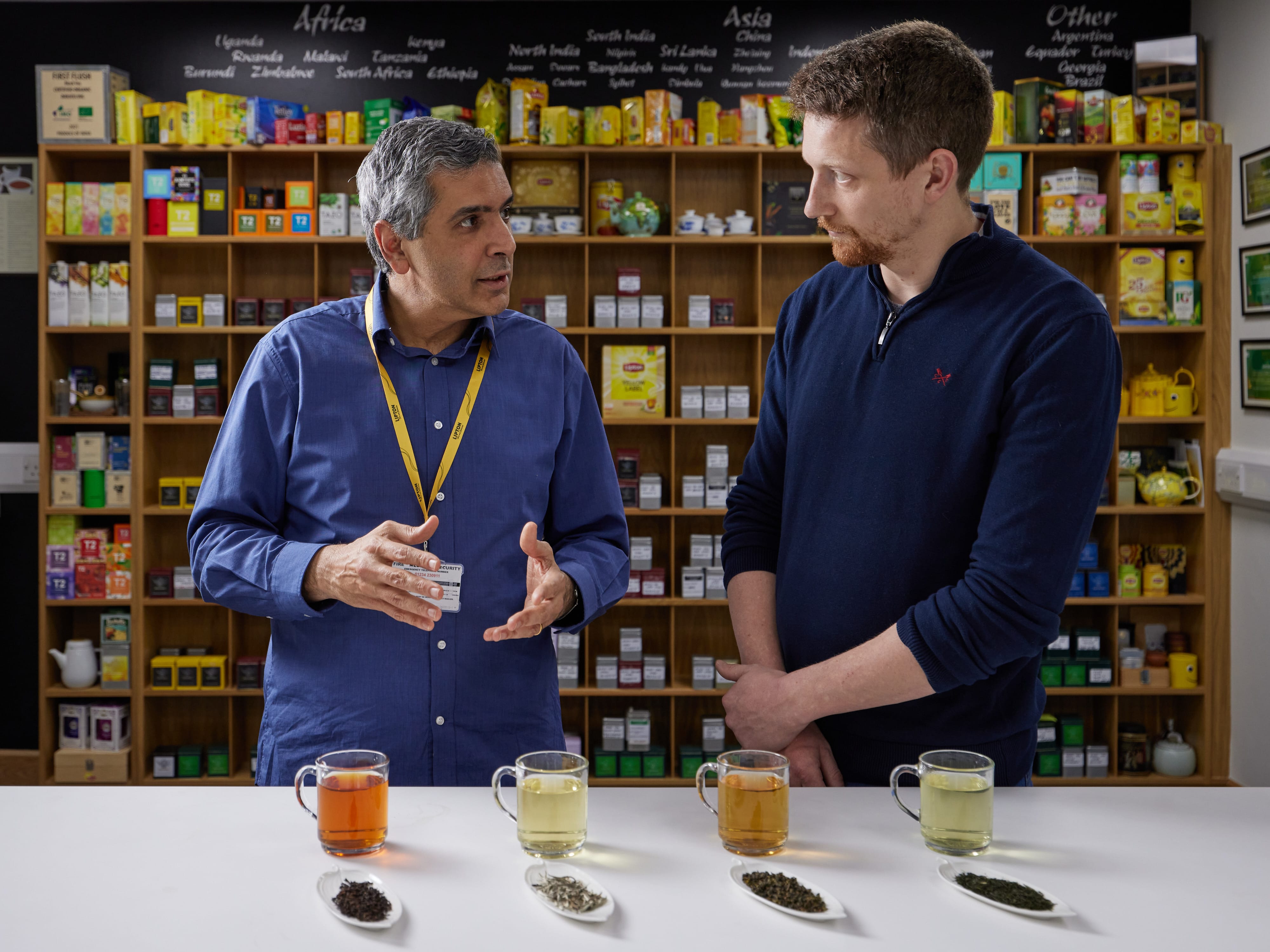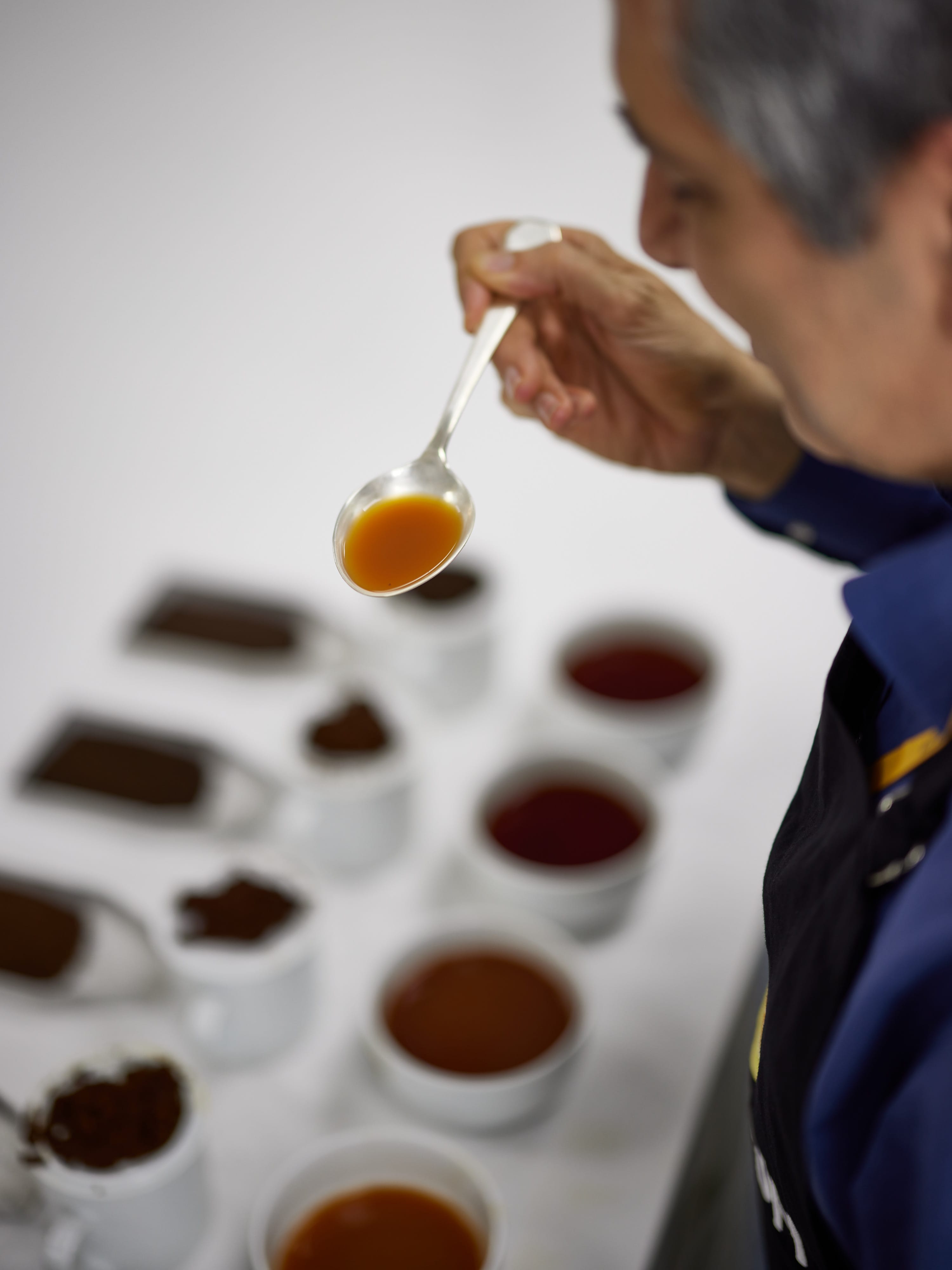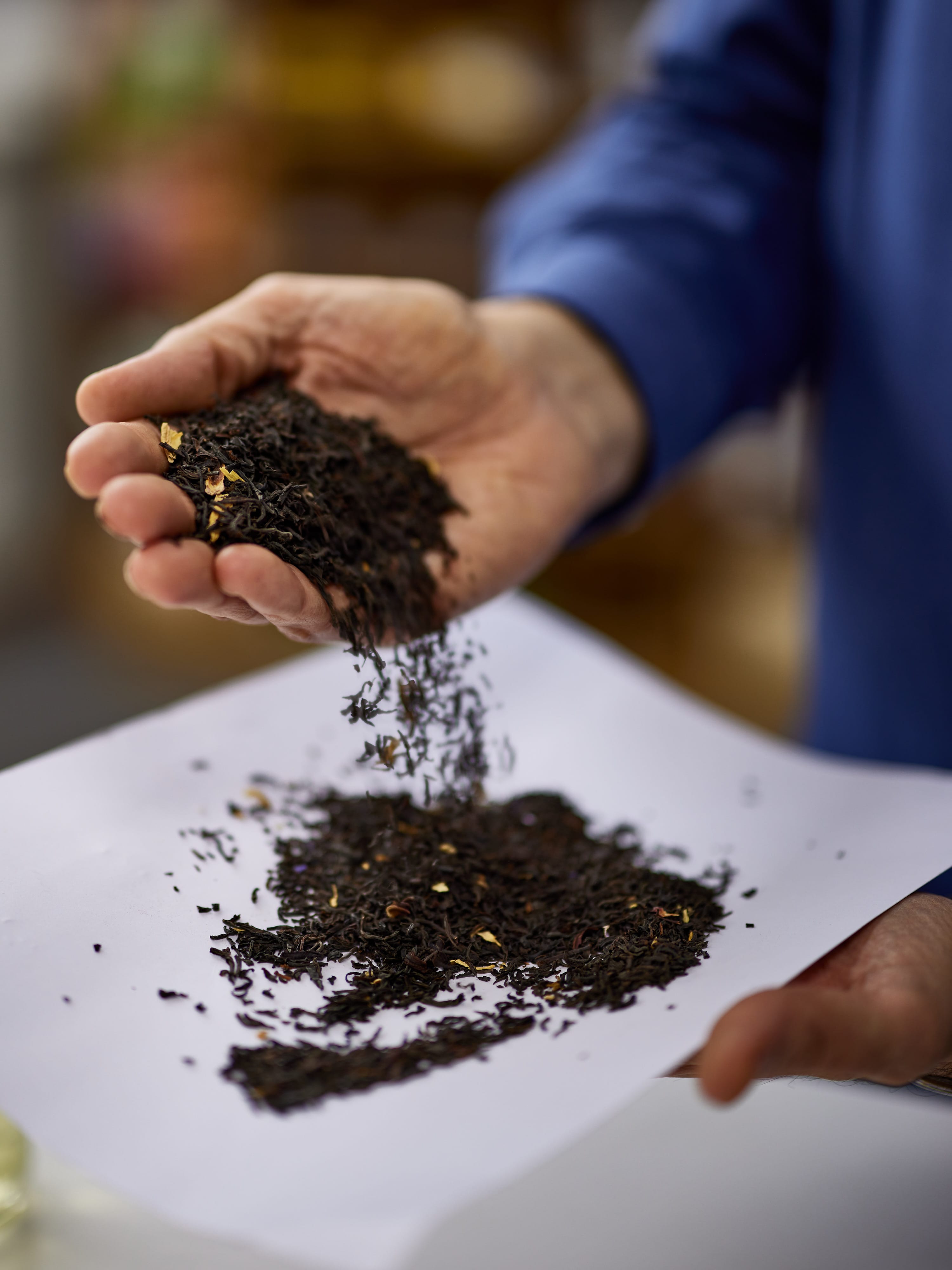
Meet our specialist team of tea tasters
We are the world’s largest tea company and our teas must always taste their best. And there’s only one way to make sure they do – by tasting them!
We have a unique TEAm of specialist tea tasters, who keep our blends “on form”, across the product’s entire bush-to-brand journey. This involves assessing the quality of tea made in our own tea gardens; fingerprinting, selecting and competitively sourcing teas from around the world; cherry-picking such purchases and judiciously blending them into consistent consumer-facing recipes; and applying our master blending skills to curate and develop new “on-trend” products that our consumers love.
Together, our 79 tasters, located in 15 countries, represent a combined 700+ years of expertise in tea, and taste up to a million cups a year! Over time, tasters aspire to move from “Apprentice” to “Operational” status, earning a Certificate and a pure silver tasting spoon with their name engraved on it – as a mark of recognition and for their ongoing use through the rest of their careers. Continuous improvement is their mantra, as they taste more and more - to improve and develop their palate memories over time. As they say, “Practice makes perfect; so perfect your practice!”
To ensure that tasters in all roles and locations “sing from the same hymn sheet”, we use an internal Global Tea Categorization Language, called Tealingo™. And to keep their tasting skills sharp, future-fit and uniformly calibrated, every team member must ‘blind-taste’, each month, a set of random tea samples from around the world and fingerprint their quality – to achieve the targeted level of proficiency. This program enables tasters to “quantify quality”, scoring every sample against a set of standards (physical and sensorial) - covering flavor, aroma, size, style, color and mouthfeel.
Tea tasting - a craft skill
The tea taster’s “palate” is to the tea industry what the fragrance expert’s “nose” is to the perfume industry. And yet, most of what we call “taste” (i.e. on the palate) actually involves smelling from the back of the throat and up into the top of the nose. “Smell” contributes so much to our appreciation of beverages, that most of us would not recognize our favorite drinks relying on “taste” alone.
Indeed, our mouth (or tongue) detects only five basic tastes: sweet, sour, salty, bitter and umami. All else – such as floral, woody, vanilla, spicy, marine, fruity – we register through our nose. In reality, our professional tasters call upon four of their five senses to understand and describe each tea – using their sense of sight, touch, smell and taste.
It’s a craft that follows well-defined rules. They “love what they do” and “do what they love” – having fun along the way. Indeed, we only want to buy and blend teas that make us smile. It’s a simple, yet age-old truth – a good blend makes you happy.
Buying & blending: two sides of the same coin
The diversity of tea is dazzling even to an experienced professional. It arises from the unique characteristics of each terroir in tea-growing countries and the craftsmanship of its thousands of producers. Quality varies constantly: one day’s crop is different from the next. This is due to the myriad combinations of nature and nurture, pedigree and processing, field and factory, heredity and environment. So the only way to buy tea is to taste a representative sample of what’s on offer, at a given point in time.
While tea raw materials change constantly, our brand promise demands that our quality always delights the consumer with a consistent signature taste. And this is where the blender’s skills come in – bridging the gap between constantly variable tea raw material quality on the one hand and the need to maintain a consistent taste experience for our consumers. Master blending is the bridge that allows this to happen – it’s how we always ensure that recipes going to our consumers, always match how they were designed.


The magic and logic of tea blending is driven by the taster’s deep understanding of consumer’s habits, needs and preferences. Our global repertoire of blends has subtlety and nuance, character and flavor – comparable to those of fine wines. Blending allows the individual virtues of diverse tea origins, terroirs and seasons to build on each other and shine – such that the end product is greater than the sum of its parts.
To add to the challenge, our master blenders need to consider many more factors beyond the teas’ organoleptic qualities – such as availability and price, seasonality and quality, sustainability and traceability, logistics and service.
A blend may contain up to twenty components from multiple countries. And it must always live up to its promise. Like the distiller of a blended Scotch needs its whisky experts, so does a quality tea brand need its professional tea tasters and blenders.

